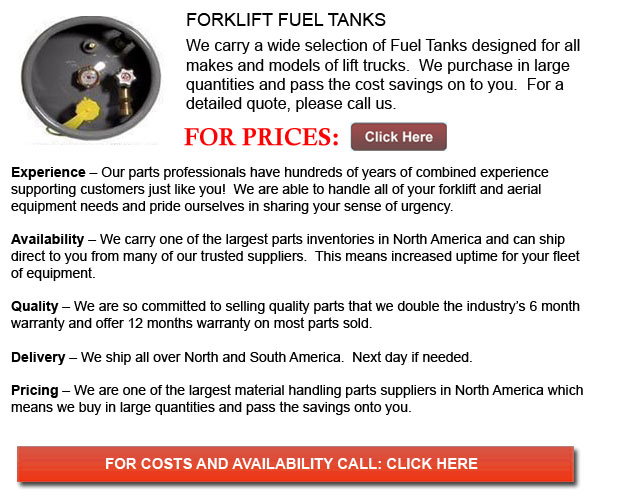
Several fuel tanks are fabricated by skilled metal craftsmen, although most tanks are built. Custom and restoration tanks could be utilized on tractors, motorcycles, aircraft and automotive.
There are a series of particular requirements to be followed when constructing fuel tanks. Typically, the craftsman sets up a mockup in order to find out the accurate shape and size of the tank. This is normally done utilizing foam board. Afterward, design issues are handled, consisting of where the outlets, seams, drain, baffles and fluid level indicator would go. The craftsman must determine the alloy, temper and thickness of the metallic sheet he would utilize to be able to make the tank. When the metal sheet is cut into the shapes required, numerous parts are bent in order to create the basic shell and or the ends and baffles utilized for the fuel tank.
Numerous baffles in aircraft and racecars have "lightening" holes. These flanged holes have two purposes. They add strength to the baffles while reducing the weight of the tank. Openings are added toward the ends of construction for the drain, the fuel pickup, the filler neck and the fluid-level sending unit. Every now and then these holes are added when the fabrication process is complete, other times they are created on the flat shell.
After that, the baffles and ends can be riveted into place. The rivet heads are often soldered or brazed in order to avoid tank leaks. Ends could then be hemmed in and flanged and sealed, or brazed, or soldered making use of an epoxy kind of sealant, or the ends can even be flanged and afterward welded. After the brazing, welding and soldering has been completed, the fuel tank is checked for leaks.
 Click to Download the pdf
Click to Download the pdf
Forklift Parts in Fresno
Alternators
An alternator is a machine which changes mechanical energy into electric energy. It does this in the form of an electrical current. In essence, an AC electric generator could be labeled an alternator. The word usually refers to a rotating, small machine driven by automotive and other internal combustion engines. Alternators which are situated in power stations and are powered...
More
Brakes
A brake in which the friction is supplied by a set of brake shoes or brake pads which press against a rotating drum shaped unit referred to as a brake drum. There are several particular differences among brake drum kinds. A "brake drum" is normally the definition provided if shoes press on the inner exterior of the drum. A "clasp...
More
Carriage Rollers
Specially designed bearings known as carriage rollers are regularly seen on lift masts because they enable them to operate better in difficult environmental surroundings. The typical lift mast is often subject to frequent oscillations, shocks, static loads, and vibrations and high dynamics. This apparatus is regularly exposed to environmental influences like for instance heat, dust, cold, aggressive ambient air, moisture...
More
Carriages and Carriage Parts
Rated by the fork carriage lifting capacity, there are actually four sizes of hook type blade carriages. The hook type fork carriages have been standardized.
The carriage bar spacing utilized for Class 1 is around thirteen inches and the Class 1 carriage is rated to hold cargo as much as 2000lbs. The Class 2 carriage is rated to carry cargo...
More
Control Valves
Automatic control systems were first developed more than two thousand years ago. The ancient water clock of Ktesibios in Alexandria Egypt dating to the third century B.C. is thought to be the very first feedback control machine on record. This clock kept time by means of regulating the water level in a vessel and the water flow from the vessel....
More
Controllers
Lift trucks are obtainable in several different models which have various load capacities. Most standard forklifts utilized inside warehouse environment have load capacities of one to five tons. Larger scale units are utilized for heavier loads, like for instance loading shipping containers, may have up to 50 tons lift capacity.
The operator could use a control so as to lower...
More
Differentials
A mechanical device capable of transmitting rotation and torque through three shafts is known as a differential. Every now and then but not always the differential will utilize gears and would operate in two ways: in cars, it receives one input and provides two outputs. The other way a differential works is to put together two inputs in order to...
More
Drive Axles
A forklift drive axle is a piece of equipment which is elastically fastened to a vehicle framework using a lift mast. The lift mast is connected to the drive axle and could be inclined around the axial centerline of the drive axle. This is accomplished by no less than one tilting cylinder. Forward bearing parts along with back bearing parts...
More


![]() Click to Download the pdf
Click to Download the pdf











